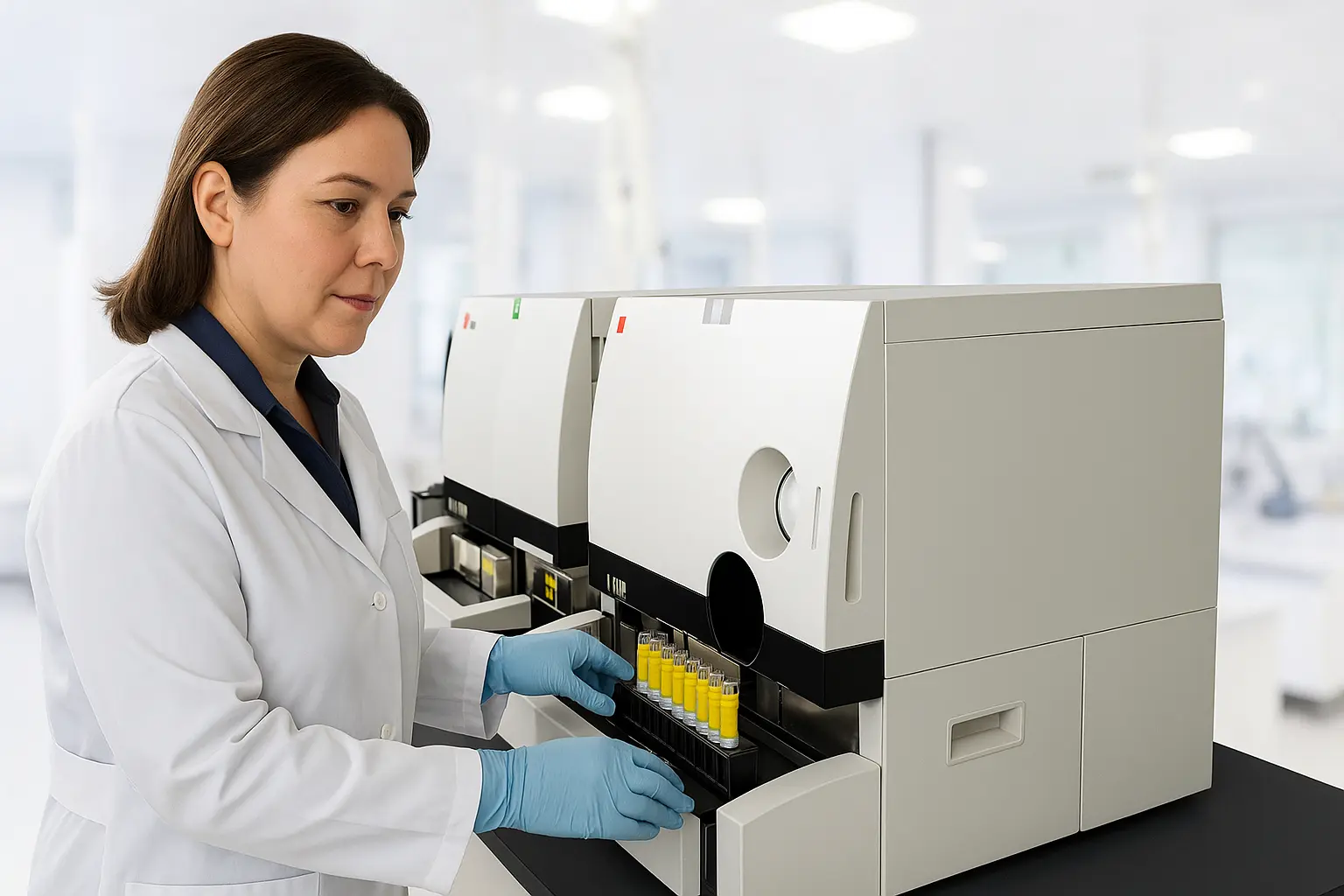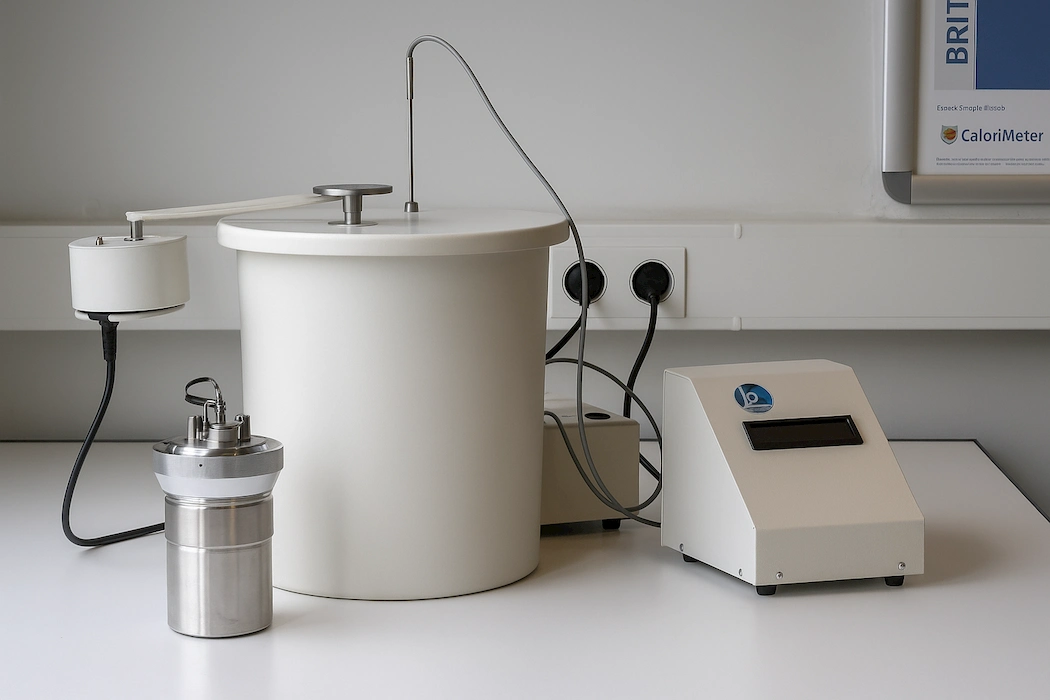For centuries, urine analysis relied on the human eye, microscope, and manual interpretation—a labor-intensive process fraught with variability. Today, a technological revolution is quietly unfolding in clinical laboratories worldwide. Fully automated integrated urinalysis hybrid systems represent one of the most significant advancements in diagnostic medicine, combining chemistry strip analysis, sediment examination, and digital intelligence into a single seamless workflow. These systems aren’t just replacing manual processes—they’re redefining what’s possible in urinary diagnostics.
In today’s fast-evolving healthcare environment, clinical diagnostic laboratories are under constant pressure to deliver faster, more accurate, and cost-effective results. One of the most impactful advancements in recent years has been the introduction of Fully Automated Integrated Urinalysis Hybrid Systems.
These cutting-edge systems combine chemical analysis with microscopic examination in a single platform, significantly improving workflow efficiency, diagnostic accuracy, and overall patient care.
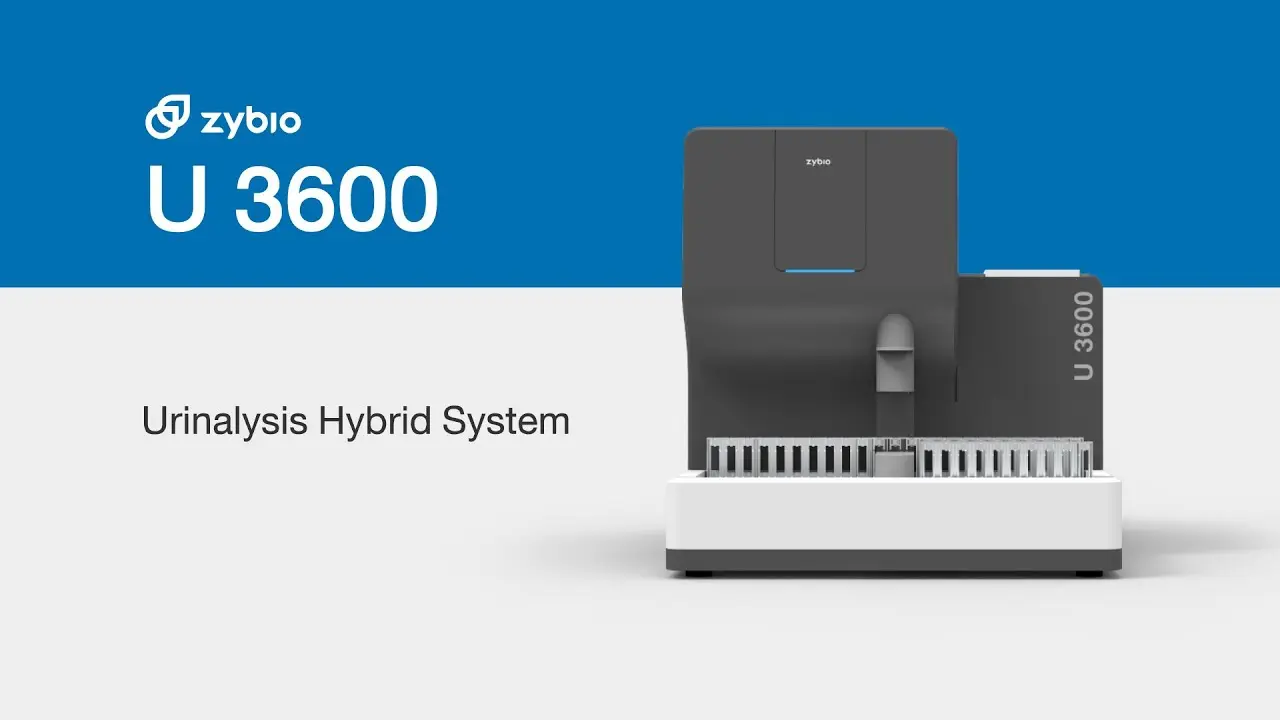
The Evolution from Manual to Unified Automation
Traditional urinalysis involved three disconnected steps: visual inspection, dipstick chemistry, and microscopic sediment analysis. Each required manual handling, creating bottlenecks:
- Centrifugation challenges: Manual methods caused cellular lysis and loss of critical elements
- Interpretation variability: Up to 56% discordance in manual microscopy results between technicians
- Time constraints: 6+ minutes per sample vs. <60 seconds with automation
What Is a Fully Automated Integrated Urinalysis Hybrid System?
A Fully Automated Integrated Urinalysis Hybrid System is an advanced diagnostic device that merges urine chemistry analysis and automated urine sediment microscopy. It uses sophisticated imaging, flow cytometry, or digital microscopy along with reagent strip testing — all fully automated and managed by intelligent software.
Key Features:
- Combined chemical and sediment analysis
- High-throughput processing
- Automated sample loading and barcode scanning
- AI-powered image recognition and classification
- LIS (Laboratory Information System) integration
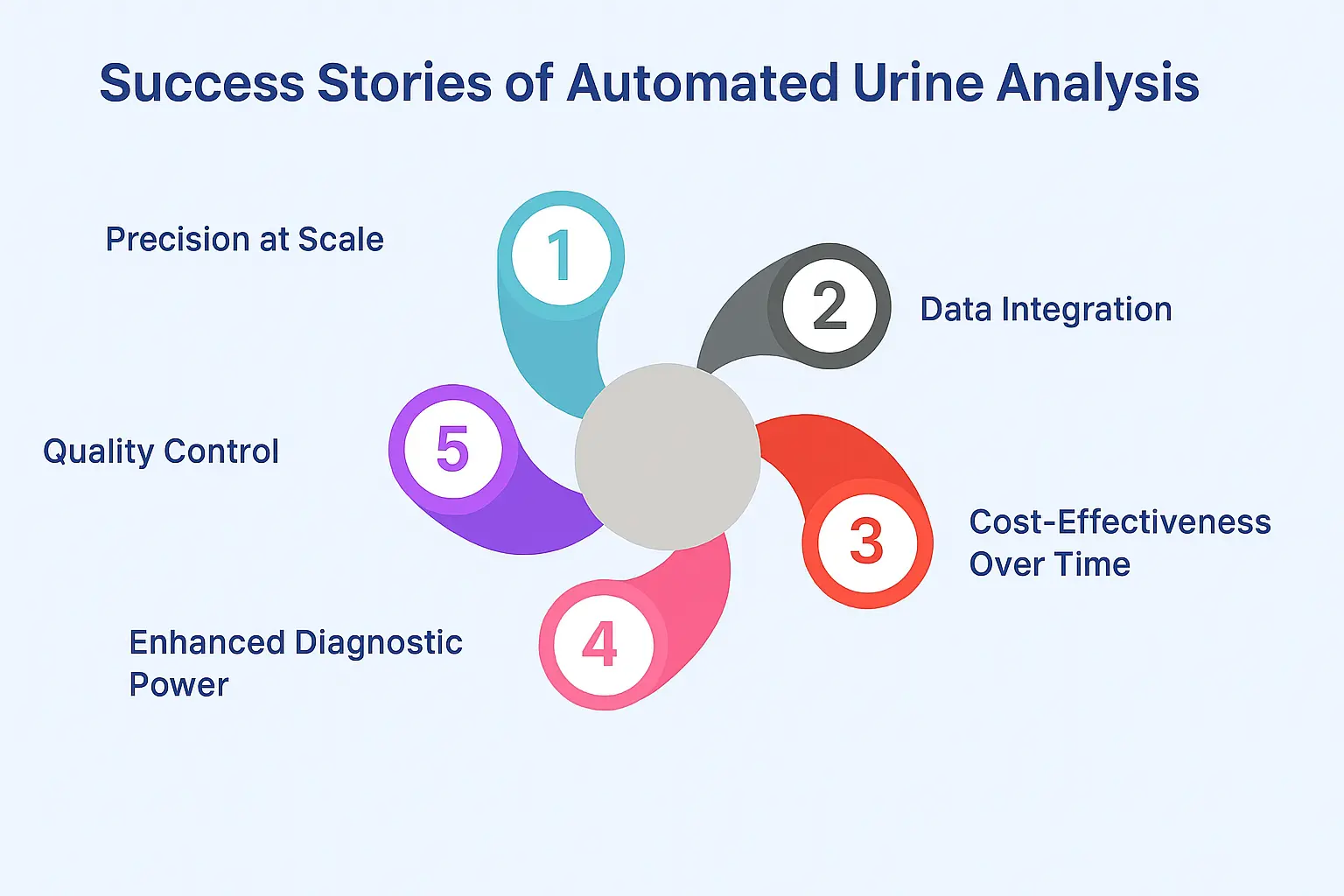
Why Is It Vital for Clinical Diagnostic Labs?
- Enhanced Accuracy and Standardization
Manual urinalysis is prone to subjective interpretation, especially in sediment analysis. Automated hybrid systems eliminate this variability by using AI and digital microscopy for consistent and reproducible results, reducing human error.
- High Throughput and Time Efficiency
These systems can process hundreds of samples per hour with minimal technician involvement. This significantly reduces turnaround time — a critical factor in hospitals and busy diagnostic centers where time-sensitive decisions must be made quickly.
- Improved Workflow and Labor Savings
Traditional urinalysis involves multiple steps and manual microscope work. Hybrid systems integrate all stages into a single automated workflow, freeing up lab staff for other critical tasks and minimizing repetitive manual labor.
- Early Detection and Monitoring
With high sensitivity and precision, automated urinalysis systems can detect early signs of conditions like:
- Urinary Tract Infections (UTIs)
- Kidney diseases
- Diabetes
- Liver disorders
- Hematuria and proteinuria
Early detection leads to better treatment outcomes and disease management.
- Data Integration and Traceability
Modern systems come with full LIS/HIS connectivity, allowing seamless data transfer, automated reporting, and traceability — key for maintaining lab accreditation and ensuring regulatory compliance.
Core Technologies Powering the Revolution
Modern hybrid systems deploy a symphony of advanced technologies:
- Digital Imaging & AI: These machines are “artificial intelligence-assisted recognition” achieves >90% accuracy for RBCs/WBCs
- Flow Cytometry: Sysmex UF-series analyzers use fluorescent flow cytometry to stain and analyze 20,000+ particles/minute, detecting subtle bacterial patterns invisible to microscopes
- Smartphone-Enabled Chemistry: CMOS-based strip readers quantify albumin via Kubelka-Munk reflectance theory, while mobile platforms enable cloud-based strip analysis
- Microfluidics: New lab-on-chip systems concentrate urine 95-fold in 3 minutes, enabling POC testing with 94.6% RBC detection accuracy
Applications in Different Healthcare Settings
| Setting | Benefits |
| Hospitals | Rapid diagnostics for inpatient and emergency care |
| Diagnostic Chains | High throughput with consistent quality across multiple locations |
| Nephrology Clinics | Detailed monitoring of kidney function over time |
| Diabetes Centers | Early detection of complications such as microalbuminuria |
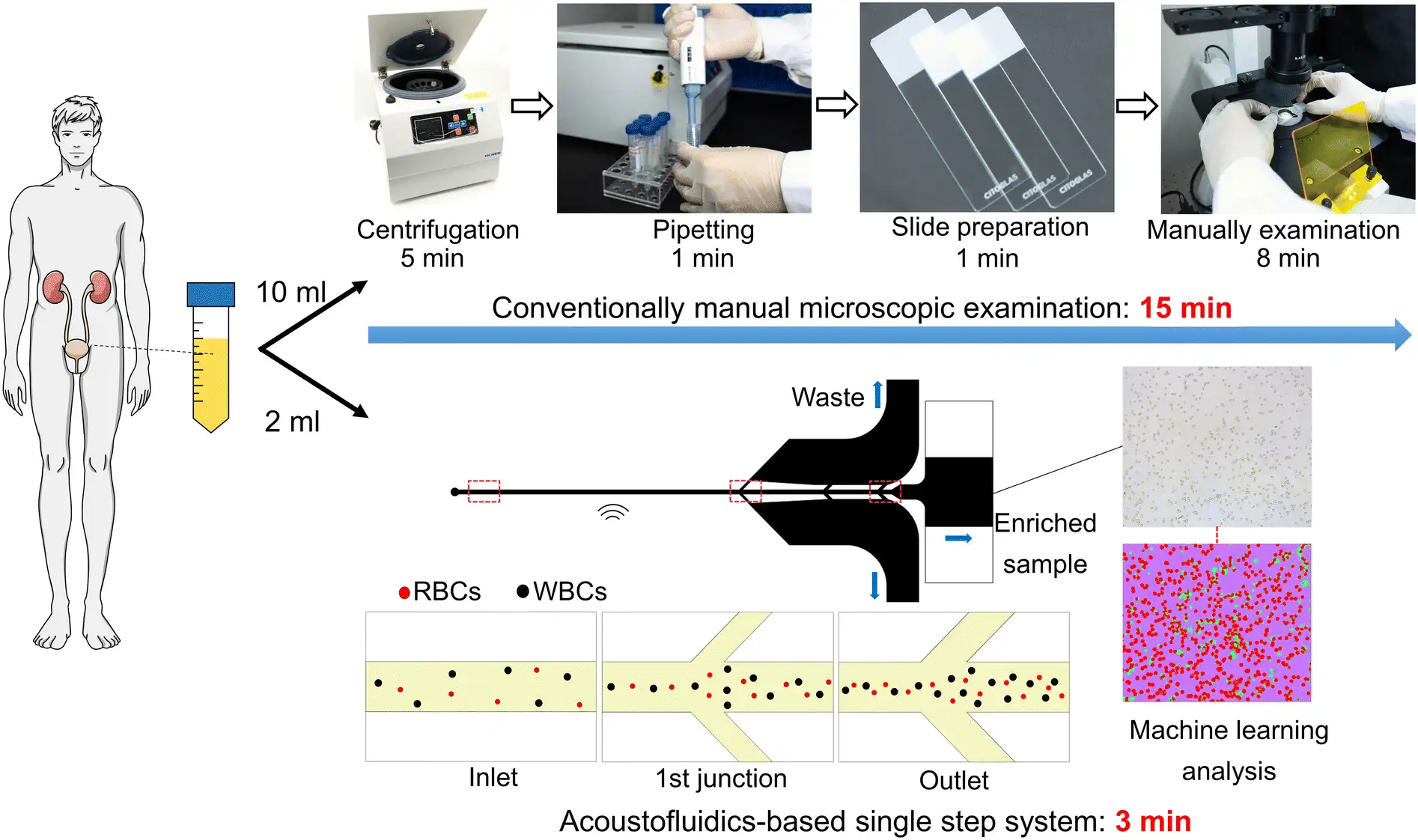
The Future of Urinalysis Is Here
With the rise in chronic kidney disease, diabetes, and urinary tract infections globally, the demand for fast, reliable, and scalable urinalysis solutions is at an all-time high. Fully Automated Integrated Urinalysis Hybrid Systems represent a critical shift from traditional methods to smart diagnostics, ensuring that clinical laboratories remain efficient, competitive, and patient-focused.
Conclusion
The integration of automation and intelligent analytics in urinalysis has transformed what was once a time-consuming, manual process into a highly efficient, accurate, and scalable diagnostic tool. For clinical laboratories aiming to meet modern healthcare demands, investing in a Fully Automated Integrated Urinalysis Hybrid System is not just a technological upgrade — it’s a strategic necessity.
By converging chemistry, microscopy, and data analytics into a single touchpoint, these platforms deliver transformative benefits: unprecedented speed, uncompromising accuracy, and actionable intelligence that crosses from screening to disease management. a paradigm shift enabling earlier interventions, optimized workflows, and ultimately, elevated patient care. The era of manual urinalysis is fading; the age of intelligent urinary diagnostics has arrived.
Interested in upgrading your lab with the latest in urinalysis technology?
Contact us today at www.apexinstrument.me
For expert guidance and solutions tailored to your needs.
- Mobile/WhatsApp: +971526191767
- Email: sales@apex-instrument.com

